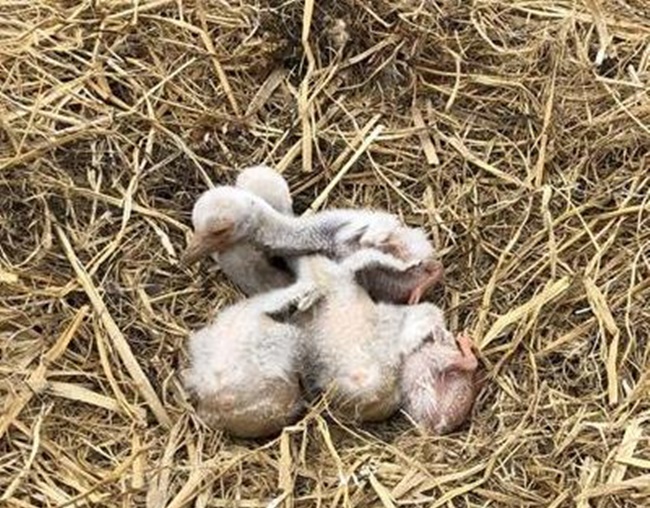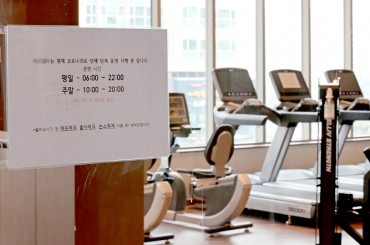
This photo, released by the Yesan municipality on April 9, 2018, shows chicks that were hatched at a breeding facility of the Oriental White Stork Park in Yesan, a town in South Korea’s central province of South Chungcheong. (Image: Yesan municipality)
YESAN, South Korea, April 10 (Korea Bizwire) – A pair of storks that were released into the wild have hatched five chicks near a research center tasked with restoring the endangered bird in the country’s central region, marking the third consecutive year the bird has bred outside captivity in South Korea, the Yesan municipal government said Monday.
A female stork named Gukhwang laid five eggs on March 21 in a nest she made with a male stork named Saenghwang in a village near the Oriental White Stork Park in Yesan, a town in South Chungcheong Province. The storks were released into the wild in July 2016 and are two of the storks that the park has returned to the wild since 2015.
The hatchings follow the news that seven chicks were hatched at a breeding facility inside the park on April 1 and 3.
According to the municipal government, chances are high that more chicks will be hatched in the wild this month, given that storks are sitting on eggs at five other places near the park. It is rare for storks to mate and lay eggs in the wild.
In 2016, a pair of storks that had been released hatched chicks. This was the first time the bird had bred naturally since 1971, when the species became extinct in the wild in South Korea after a male storkwas shot dead by a poacher.’
The Yesan municipal government, which established the park in 2009 as part of its efforts to promote the reintroduction of the bird, has released 24 adult or young storks into the wild. The park has been designated as national monument No. 199.
This third straight year of natural breeding gives the project a boost, brightening prospects for the stork to become a permanent resident.
Storks released into or bred in the wild have been confirmed to live in the provinces of South Jeolla, North Jeolla, South Chungcheong, North Chungcheong and Gyeonggi, with some of them traveling as far afield as North Korea, China and Japan.
“The stork, in spite of being a resident bird, became a migratory bird flying from Russia and China decades ago,” Kim Soo-kyung, a senior researcher at the park, said.
“As the project, which we carry out with the Cultural Heritage Administration and the Korea National University of Education, pays off, it appears that the bird is becoming a resident bird through its successful natural breeding.”
There are 84 storks being bred at the university in Cheongju, central South Korea, and 73 at the park, and there are 24 storks currently in the wild.
(Yonhap)






